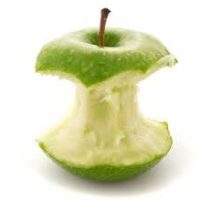The Big Deal About Core
 The best core exercises may surprise you. It’s not enough to just do ab crunches and sit ups. To build a strong core you need to exercise a variety of muscles, from your hips to your shoulders.
The best core exercises may surprise you. It’s not enough to just do ab crunches and sit ups. To build a strong core you need to exercise a variety of muscles, from your hips to your shoulders.
Most people think of the core as a nice six-pack or toned abs, but the abs have very limited and specific action, and what experts refer to as the ‘core’ actually consists of different muscles that run the entire length of the torso.
When these muscles contract, they stabilize the spine, pelvis, and shoulder girdle and create a solid base of support for powerful movements of your extremities.
WHAT ARE THE CORE MUSCLES?
Experts vary in which muscles they consider to be the core muscles. Some include the muscles of the pelvic floor, but the following list includes the most commonly identified core muscles as well as the lesser know groups.
- Rectus Abdominis: Located along the front of the abdomen, this is the most well known abdominal muscle and is often referred to as the six-pack.
- Erector Spinae: This group of three muscles runs along your neck to your lower back.
- Multifidus: Located under the erector spinae running vertically, these muscles extend and rotate the spine.
- External Obliques: Located on the side and front of the abdomen.
- Internal Obliques: Located under the external obliques, they run in the opposite direction.
- Transverse Abdominis (TVA): Located under the obliques, it is the deepest of the abdominal muscles and wraps around your spine for support and stability.
- Hip Flexors: Located in front of the pelvis and upper thigh, the muscles that make up the hip flexors include the psoas major, illiacus, rectus femoris, pectineus, and sartorius.
- Gluteus Medius and Minimus: These are located at the side of the hip.
- Gluteus Maximus, Hamstring Group, Piriformis: These are located in the back of the hip and upper thigh leg.
- Hip Adductors: These are located at medial thigh and draw the legs inward.
WHY DEVELOP GOOD CORE STRENGTH?
A Strong Core Reduces Back Pain: Abdominals get all the credit for protecting the back and the foundation of strength, but they are only a part of what makes up the core. If the core is weak or IMBALANCED, the result is a loss of the correct lumbar curve. Stronger, balanced core muscles help maintain appropriate posture which reduces strain on the spine.
- A Strong Core Improves Athletic Performance: Because the muscles of the trunk and torso stabilize the spine from the pelvis to the neck and shoulder, they allow the transfer of power to the arms and legs. All powerful movements originate from the center of the body and flow outward, not from the limbs alone. The more powerful the core, the more powerful the limbs can contract.
EFFECTIVE CORE EXERCISES
There are probably hundreds of exercises and routines on the market today, all claiming to be the best. What you choose to do is entirely up to you, but keep in mind that the most effective core exercises are those that engage multiple muscles throughout the torso and cross several joints and work together to coordinate stability. Some of the best core exercises involve just the bodyweight, such as planking and bracing.




